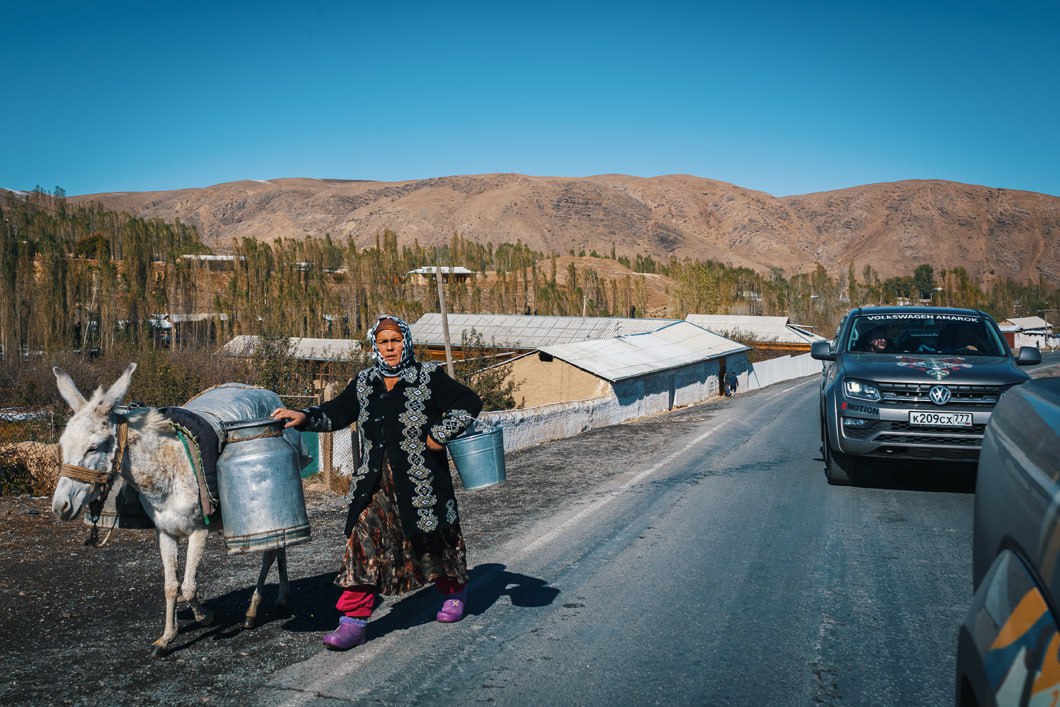A new water supply system in Vose district of southern Tajikistan, supported by the World Bank, was launched on February 11 connecting 40,000 residents of 14 rural villages to safely managed water supply services. The “Chilla” water supply facility was inaugurated by visiting World Bank Regional Director for Sustainable Development at the Europe and Central Asia region, Sameh Wahba, joined by Acting Governor of Khatlon region, Davlatali Said, Minister of Finance of Tajikistan, Faiziddin Qahhorzoda, General Director of the State Unitary Enterprise "Khojagii Manziliyu Kommunali" (SUE KMK), Usmon Gul Davlatzoda, and World Bank Country Manager, Ozan Sevimli.
Poor water and sanitation services in rural areas of Tajikistan disproportionately affect women and children, exposing them to elevated health risks. In the area serviced by the new water supply system, previously only 1000 households had access to piped water, and even those were receiving services for several hours a day.
“With these investments safe water will be made available to more than 5000 households, reducing the burden on women and children, who are often responsible for water fetching in households,” said Sameh Wahba during the launch ceremony. “Investments in improved water supply and sanitation services are of highest priority both for the World Bank and the Government of Tajikistan, as the quality of these services are critical for the health and future wellbeing of the population.”
The rehabilitation of the “Chilla” water system was possible with support from the Rural Water Supply and Sanitation Project, financed with a $58 million grant from the International Development Association. It is investing in improved water and sanitation services in districts of the southern Khatlon region with the highest levels of poverty and inadequate access to clean water, sanitation, and hygiene (WASH) conditions. With project support, around 400,000 people are expected to gain access to safe drinking water and around 100,000 people, mainly children, will benefit from investments in WASH facilities and hygiene training in schools.
Apart from infrastructure investments, the project is supporting ongoing water sector reforms by strengthening water utilities in target districts to improve the quality of the service delivery.
The World Bank’s current investments in water and irrigation sectors in Tajikistan stand at $163 million.
Mr. Wahba also met with residents of Mehrobod village of Vose district, located near the confluence of Yakhsu and Kizilsu rivers. The village is among other areas, identified as at risk of flooding in Khatlon region, which have benefitted from World Bank-financed riverbank reinforcement works under the Strengthening Critical Infrastructure against Natural Hazards Project. The project is helping rebuild key infrastructure in two regions, Khatlon and Gorno-Badakhshan Autonomous Oblast (GBAO), which suffered major floods and mudflows in July 2015. In both regions, the World Bank investments in infrastructure are envisioned to benefit over 640,000 people.
The World Bank and Government teams also visited two project sites under Rural Economy Development Project (REDP), which is supporting increased income opportunities for local population by investing in two sectors – tourism and agribusiness. First, they met with a resident of Tugarak Jamoat of Vose, who applied for a small grant under the project to build and equip a cold storage facility, which will allow him to decrease postharvest losses and increase his income.
They also visited the ancient Hulbuk Fortress, which is being improved with support from REDP. The project is complementing past rehabilitation done by the Government of Tajikistan by financing landscape beautification around the fortress, which includes landscape architecture, such as pathways, green areas, and lighting to and within the site. The beautification and commercialization of this tourism site will create economic for local tourism providers, such as homestays, tour operators, guides, and create jobs for local population. Because Hulbuk is a UNESCO-nominated site, all works are being conducted under UNESCO guidelines.
Currently, the World Bank is financing 24 projects in Tajikistan totaling $1.54 billion. Since 1996, the World Bank has provided over $2.72 billion in IDA grants, highly concessional credits, and trust funds for Tajikistan. The World Bank is committed to continuing its support as the country strives to improve lives and meet the aspirations of its young and growing population.




